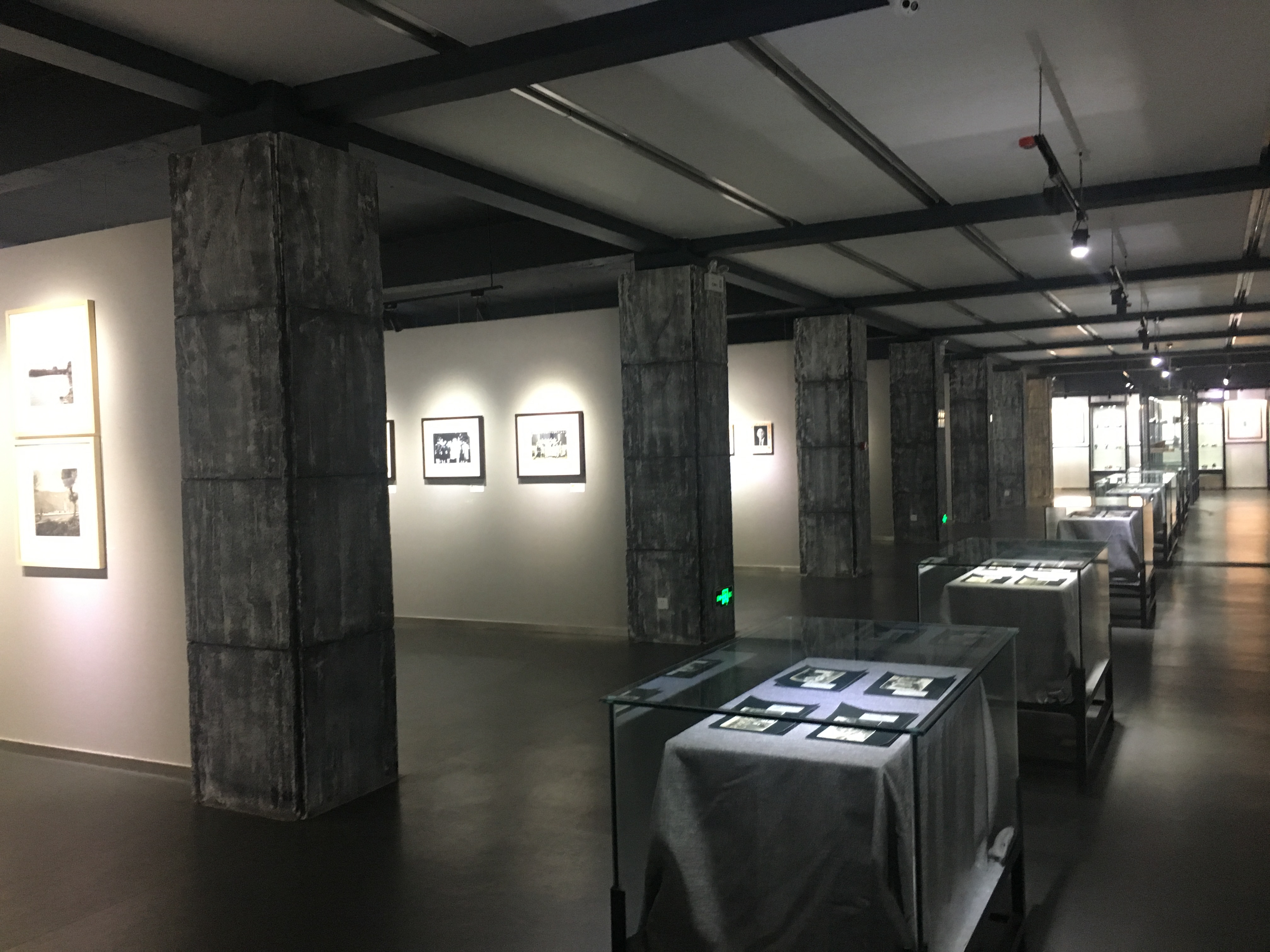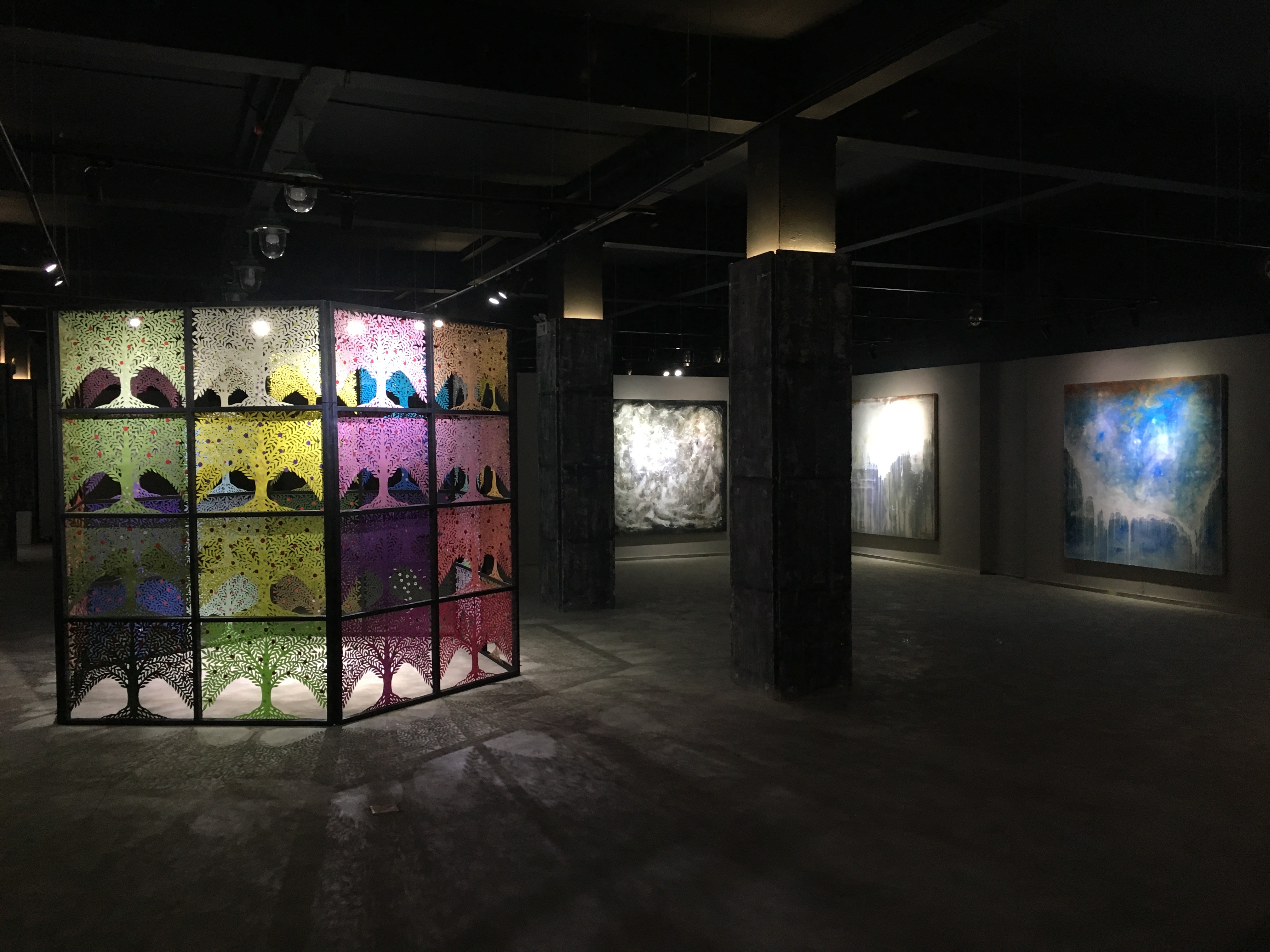Curator, writer, and contributing researcher Rebecca Catching had the opportunity to sit down and talk with Toby de Silva, from the Dali Art Factory in Dali, Yunnan Province.
China Residencies: How and when did the residency start?
Toby de Silva: The first residency period was February 2017 for three months. The idea came about last year when the opportunity arose to have a custom residency building built.
CR: Can you tell us about The Dali Art Factory, it is a kind of creative district which includes the Dali Photography Museum as well. Is this right?
TD: The Art Factory is a space rented to 40 art-related businesses and the Photography Museum. In the building where the artists are staying, there are workshops, a haberdashery, and a leather working studio.

Façade of Dali Art Factory

View from the Art Factory of Dali Old Town and Cangshan Mountains
CR: What is your role in the residency? How did you get involved?
TD: I am the Artistic director and I help run the residency alongside Eve, the residency manager. I am responsible for advertising. I got involved because I have been friends with the people running the Art Factory for a number of years and they asked me to be the liaison to the western world, as well as bring my photography ability to the projects we work on and also to provide a different perspective to running the place.
CR: Tell us a bit about yourself and your background.
TD: I am from Windsor, England. I have been in Asia for ten years, living in Thailand and Japan but predominantly China. My photography work is centered around the representation of the macabre. I studied at Falmouth Art School at University of Westminster. I have an MA in photography.
CR: How did you decide on the location of the residency?
TD: The space was available within the complex and it was felt that the most suitable use of this space was to build a custom residency in a traditional Dali-style dwelling. If you take a look at the upstairs, that’s the studio space. You can take as much or as little as you need. It’s like a live-work building.
CR: There is the main room on the ground floor and then the second floor both are available for studio spaces?
TD: Yes, so potentially it can be a communal space but if people require privacy we can partition sections off.
CR: What kind of facilities, equipment, supplies or tools are available?
TD: It’s one of those things that if we have an artist coming with a particular desire to work in a medium we will start stocking it. We have basic art supplies. In terms of facilities, we have an Epson 100cm large format printer, photography studio for shooting with lights, and a darkroom with a Devere large format enlarger which can print up to 5x4 size.
CR: How many people are on staff? What is each person responsible for?
TD: Eve is the residency manager who oversees the wellbeing and facilitates everything necessary for the artists to be able to maximize their stay here. She is available to help them with everything to make their life easier and fulfilled, and I am I am available for questions related to their work both technical and aesthetic.
CR: Can you talk a little bit about the trips and cultural exchange opportunities that you give them?
TD: Everyone attending the residency will be taken on various local trips to see artists in their studios, local craftspeople, seasonal cultural events, the Fire Festival, Dragon Boat Festival, trips to villages with particular cultural relevance, artistic specialties such as Zhoucheng tie-dyeing, Heqing silver and paper making village and visiting local artists such as Caroline Cheng from the Pottery Workshop.
CR: Can you talk a little bit about the photography museum and the collection you are building?
TD: The photography museum currently is collecting every image we can which was taken prior to 1948 of Yunnan Province in order to be the go-to archive for historical Yunnan imagery. The archive has been sourced mainly from outside of China, through contacting institutions, religions missions, auctions, and through other collectors. The museum is constantly looking to acquire new materials and a second phase of a post-1948 collections is on the horizon.

CR: Can you tell us about us about the founders of the residency and their role?
TD: The founding directors George Chao Xi and Zhang Yu are also very hands-on, sharing their local knowledge of the local culture and the artistic scenes in the province. They are both photographers. They are very at the forefront of the Chinese photography community and photography scene.
CR: What kind of artists are you looking for?
TD: We really want to take people who want to come here for a reason—i.e. their work will be resonant of their surroundings—people who would value the opportunity to spend up to three months in one of Asia’s most stunning and culturally rich regions which is home to 25 minority groups, all with their own individual characteristics dress and often language. We are more than happy to host people interested in collaborating with local artists and craftspeople.
CR: What is the duration of your residency? What’s the shortest time period you’ll consider and what’s the longest?
TD: We prefer 3 months but we will happily accept applications for shorter periods; I think a minimum of a month.
CR: What does the residency provide? What should the artists arrange for themselves?
TD: The residency provides accommodations, studio space and a support team always available to advise and assist as well as lots of local trips to experience the culture, meet local artists and participate in traditional events and festivals. Extra costs include materials, optional trips to places like Lijiang and Shangri-La, food (we have a cheap onsite canteen and a well-appointed kitchen).
CR: Do the artists leave work once the residency is done?
TD: Yes. We would like to encourage people to do it, to put in group shows at a later stage. But it’s optional. We can’t force people to do that. But it’s our intention to have regular showcases of our current and previous residents in our galleries. Personally I would like to have a place where we could sell and present and previous resident's works.
CR: What are the do’s and don’ts? Are there any requirements or rules for the artists?
TD: I don’t think we could suggest any of that without sounding really pompous. We encourage people who are happy to engage with the local artist community, at the same time if someone wants to write a book and not engage then that’s their choice. Last time we had lots of workshops where the artists were giving workshops to kids. We are happy to have them engage with the community with live painting and things like that... but we are sympathetic to all creative processes.
CR: Do you help artists in residence sell their work?
TD: We have a relationship with an onsite gallery which is a potential outlet for our resident’s work. At the end of every residency period, there is a group show of all the participating artists who can show as little or as much of their work they desire; I think it’s a 400sqm contemporary art space. The shows are well publicized and attended by local artists, government dignitaries, the local and expat community and are covered by local media.
CR: How many artists in residence have you hosted so far?
TD: There was Debbie Donnelly from New Zealand who was working in textiles and had an interest in working with the tie-dye artists from Zhoucheng, a village 20-25km north of Dali; Ariane Blais, a Quebecoise who is an abstract painter whose work referenced the local environment and who has since moved into the Art Factory compound as a permanent resident. Then there was Jui Ping Chang who is a Taiwanese painter who came on the residency to learn the craft of paper cutting and produced work using this technique. She also had a solo show here and it has recently moved to a gallery in Taiwan, Art Door Gallery in Taipei. Minwoo Lee, is a Korean-Canadian artist who did a video installation art and a folded paper installation. He also did a talk on photography without using a lens, using bending light, for the community. Arianne had a show as well in her studio space so out of the group of four, two had solo shows. I photographed it and we did a nice display.

2017 Residency Show ‘Surface Nexus’ in our Contemporary Art Space
CR: How many visitors the museum will typically see in a month are there a lot of people coming through the doors?
TD: The residency show we had was open for a few weeks attracting 3-4,000 visitors, and local media attention, print and television. We have had quite a lot of coverage.
This interview was carried out by Rebecca Catching for China Residencies November 2017
